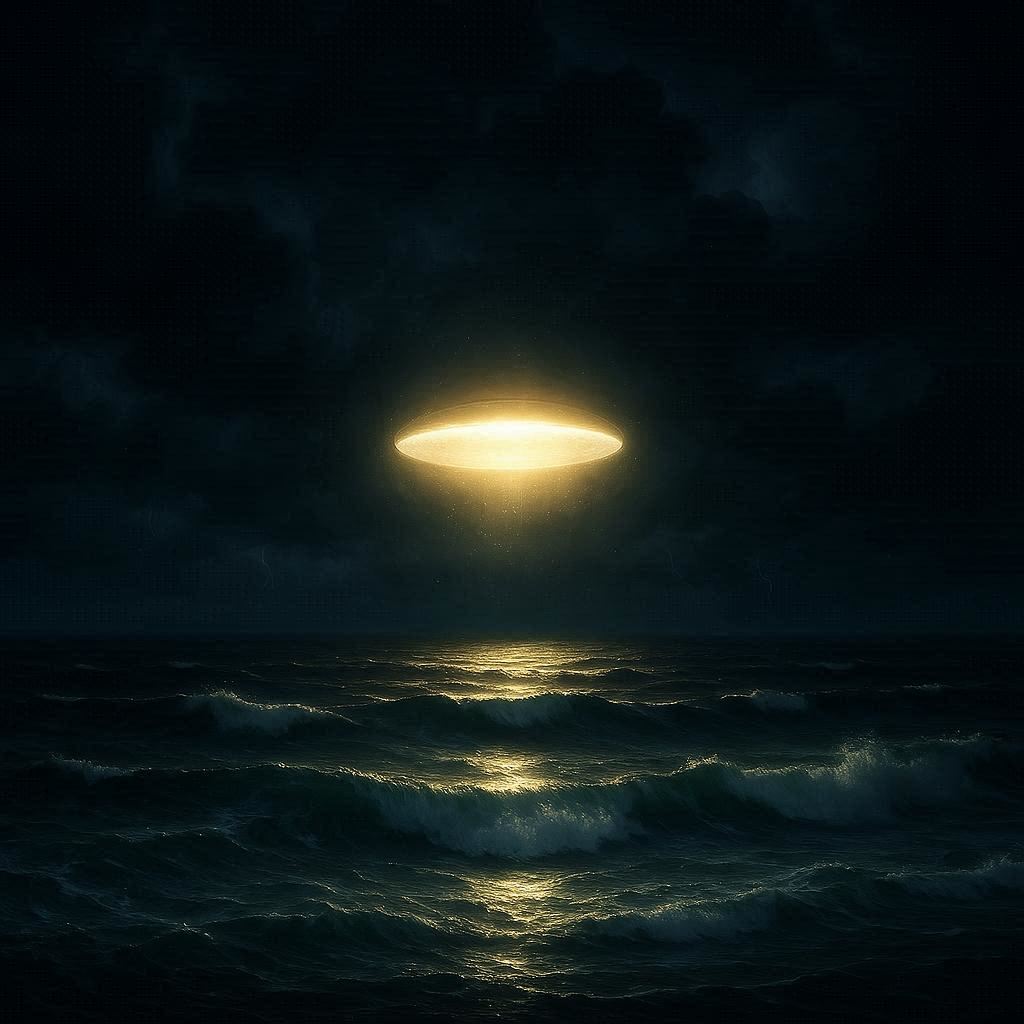From the earliest days of human imagination, people have looked at the night sky and asked whether we are alone. The vastness of the heavens has always suggested possibility. The stars seemed like scattered fires in a cosmic wilderness, each perhaps illuminating a world of its own. Ancient myths spoke of celestial beings, gods who descended from the skies, or mysterious creatures who shared the Earth with us unseen. With the rise of modern science, the question has become sharper, stripped of myth but not of awe: Are there aliens—or any other intelligent life forms—already here on Earth?
This is not merely a question of curiosity. It touches on the deepest aspects of human identity. To know whether we are unique in the cosmos is to know whether our story is singular or part of something grander. The search for alien life is not only about discovering others, but also about discovering ourselves.
The Universe Teeming with Possibility
Before considering Earth itself, it is important to acknowledge the scale of the universe in which our planet exists. Astronomers estimate there are over 100 billion galaxies, each containing hundreds of billions of stars. Around these stars are planets, some rocky and Earth-like, orbiting in the so-called habitable zone where liquid water could exist. The Milky Way alone may host billions of such worlds.
In this context, the probability that life has arisen elsewhere seems almost inevitable. Indeed, to many scientists, the greater puzzle is not whether aliens exist but why we have not yet found evidence of them—a puzzle known as the Fermi paradox. If intelligent civilizations are common, why has none made contact? Why do we not see their probes, their signals, their artifacts?
This paradox drives much of the scientific and philosophical debate. It also sets the stage for speculation about Earth itself. If life has appeared elsewhere, might it have reached us already? Could aliens be here—not in distant galaxies but in our oceans, in our skies, or even among us unnoticed?
Searching for Shadows in Science
The scientific approach to alien life begins with evidence, and evidence is elusive. Reports of unidentified flying objects—now often called unidentified aerial phenomena (UAPs)—have circulated for decades. Pilots, military personnel, and civilians have described lights in the sky or craft that move with speeds and agility beyond known technology. Recently, governments, including the United States, have acknowledged that some of these sightings remain unexplained.
But unexplained does not equal extraterrestrial. Atmospheric phenomena, experimental aircraft, sensor errors, and psychological perception all provide alternative explanations. Science demands caution. For every extraordinary claim, extraordinary evidence is required. Yet the very persistence of these reports keeps the question alive. Something unusual is occurring in our skies, and though we cannot yet attribute it to aliens, neither can we entirely dismiss the possibility.
The Oceans as Alien Worlds
If we search for alien intelligence, perhaps we should not look up but down. Earth’s oceans, covering more than seventy percent of the planet, remain vastly unexplored. In their depths lie creatures that already seem alien to us—bioluminescent organisms glowing like stars in the abyss, colossal squids with eyes the size of dinner plates, and ecosystems thriving in boiling hydrothermal vents without sunlight.
Some scientists have suggested that if alien life were to seek refuge on Earth, the oceans would provide the perfect hiding place. Vast, dark, and difficult to penetrate, they are natural sanctuaries. The discovery of unexplained underwater phenomena—strange sounds, objects tracked by sonar, or unusual marine behavior—has fueled speculation that intelligent entities could lurk beneath the waves. While there is no proof of extraterrestrials in the sea, the mystery of the deep invites the imagination to wander.
Microbial Aliens: The Hidden Possibility
Intelligence need not always appear in grand, technological forms. If life has reached Earth from beyond, perhaps it came not as beings in spacecraft but as microscopic stowaways. The idea of panspermia suggests that life, or its building blocks, can travel across the cosmos on comets, asteroids, or interstellar dust. Microbes, resilient to radiation and extreme temperatures, might survive the journey.
If such microbes arrived on Earth billions of years ago, they could have contributed to the origin of terrestrial life itself. In that sense, we may all be alien to some degree, our lineage tracing back not only to this planet but to the wider universe. Though we cannot yet confirm this theory, studies of extremophiles—organisms that live in boiling acid pools, frozen glaciers, or deep within rocks—demonstrate life’s astonishing adaptability. These creatures remind us that if life exists elsewhere, it may be far stranger and hardier than we imagine.
Intelligence Beyond the Human
Even if extraterrestrials have not yet visited Earth, the planet is not devoid of intelligence beyond our own. Consider dolphins, elephants, crows, or octopuses—creatures with complex behaviors, problem-solving abilities, and social communication. Their intelligence is different from ours but no less real. Some scientists argue that we must broaden our definition of “intelligent life” to include these beings.
In this sense, aliens are already here, not from another world but from evolutionary branches that diverged millions of years ago. Their minds are alien to us, shaped by environments and survival strategies far from human experience. To listen to a whale’s song echo across the ocean or to watch an octopus solve a puzzle is to glimpse a kind of alien intelligence that shares our planet. Perhaps our search for extraterrestrials blinds us to the marvel of the other minds already around us.
The Psychological Dimension of Aliens
Belief in aliens is not only a scientific question but a psychological one. Human beings have always projected their hopes and fears onto the unknown. For some, aliens represent salvation—advanced beings who might guide us toward peace and wisdom. For others, they embody fear—invaders who threaten our survival.
The cultural fascination with extraterrestrials, from ancient myths to modern science fiction, reveals as much about us as about the cosmos. Stories of alien encounters often reflect the anxieties of their times: Cold War fears of invasion, technological anxieties about surveillance, or ecological concerns about planetary stewardship. Whether or not aliens are real, our imaginings of them mirror the landscapes of our collective psyche.
Government Secrecy and the Allure of Mystery
Part of the intrigue surrounding aliens on Earth comes from secrecy. For decades, governments have classified information about unusual aerial sightings, fueling speculation that they know more than they reveal. The famous case of Roswell in 1947, with its rumors of a crashed UFO and recovered bodies, has become a cornerstone of alien lore. While official explanations attribute the incident to a balloon program, distrust persists.
This tension between secrecy and disclosure sustains the public imagination. Whenever officials acknowledge unidentified phenomena, as in recent Pentagon reports, speculation surges. The possibility that alien visitors walk among us, hidden behind bureaucratic silence, continues to enchant and disturb.
Why Contact Remains Unlikely
Despite fascination, most scientists remain cautious. The distances between stars are immense, and interstellar travel would require technologies beyond our current imagination. Even if advanced civilizations exist, the chances that they have visited Earth remain slim. Moreover, if they had arrived, the absence of undeniable evidence—artifacts, signals, or public contact—suggests that either they are not here or they choose to remain hidden.
Another possibility, more sobering, is that intelligent civilizations are rare or short-lived. Perhaps technological species tend to destroy themselves before mastering interstellar travel. In that case, the silence of the universe may not be evidence of absence but of fragility.
The Hope and Fear of Discovery
The possibility of alien life on Earth carries profound implications. If proven, it would be the greatest discovery in human history, forcing us to rewrite our place in the cosmos. Yet it would also provoke fear. How would religions, governments, and societies react to the confirmation that we are not alone? Would unity emerge in the face of cosmic kinship, or would divisions deepen under the weight of uncertainty?
Scientists continue to search, with radio telescopes listening for signals, space missions probing planets and moons, and deep-sea explorations mapping the unknown. Each discovery—whether of a distant exoplanet or a new species in the ocean depths—reminds us that mystery endures.
Conclusion: Between Wonder and Evidence
So, are there aliens or other intelligent life forms on Earth? The answer remains elusive. Science has not found proof of extraterrestrial visitors, yet neither has it closed the door. The universe is vast, time is deep, and Earth itself holds unexplored frontiers where surprises may await.
Perhaps one day we will confirm that we are not alone. Perhaps we will learn that life’s spark is universal, carried by the winds of the cosmos. Or perhaps we will discover that intelligence, in all its varied forms, already surrounds us in the creatures with whom we share this planet.
Until then, the question remains both a mystery and a mirror—reflecting our hopes, our fears, and our unquenchable curiosity. The search for aliens is ultimately the search for connection: to the universe, to each other, and to the possibility that existence is richer than we can yet imagine.






